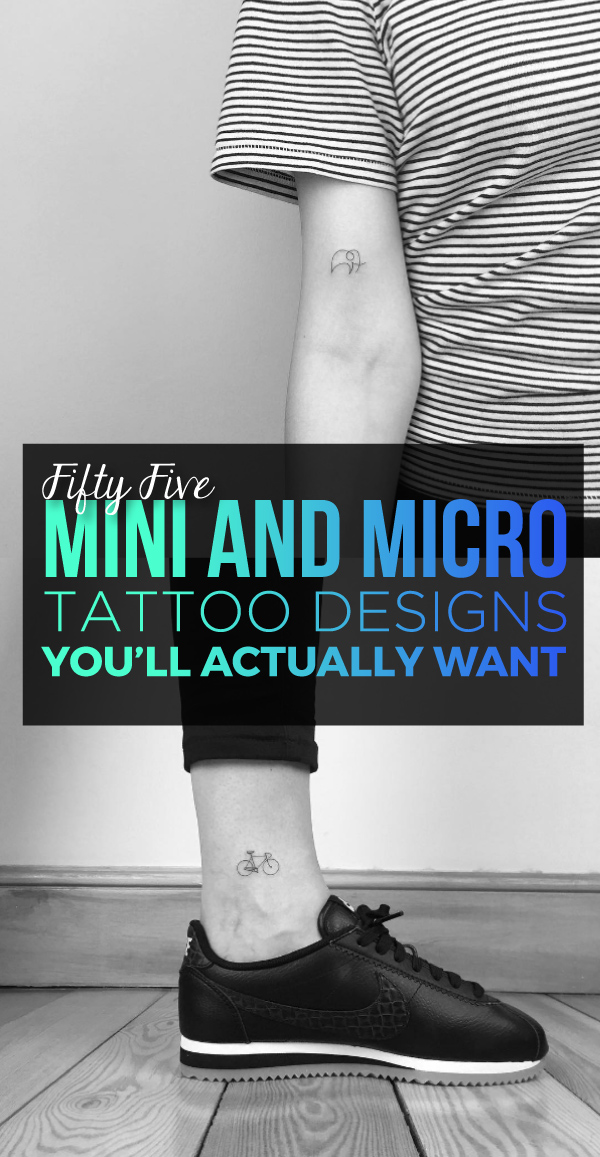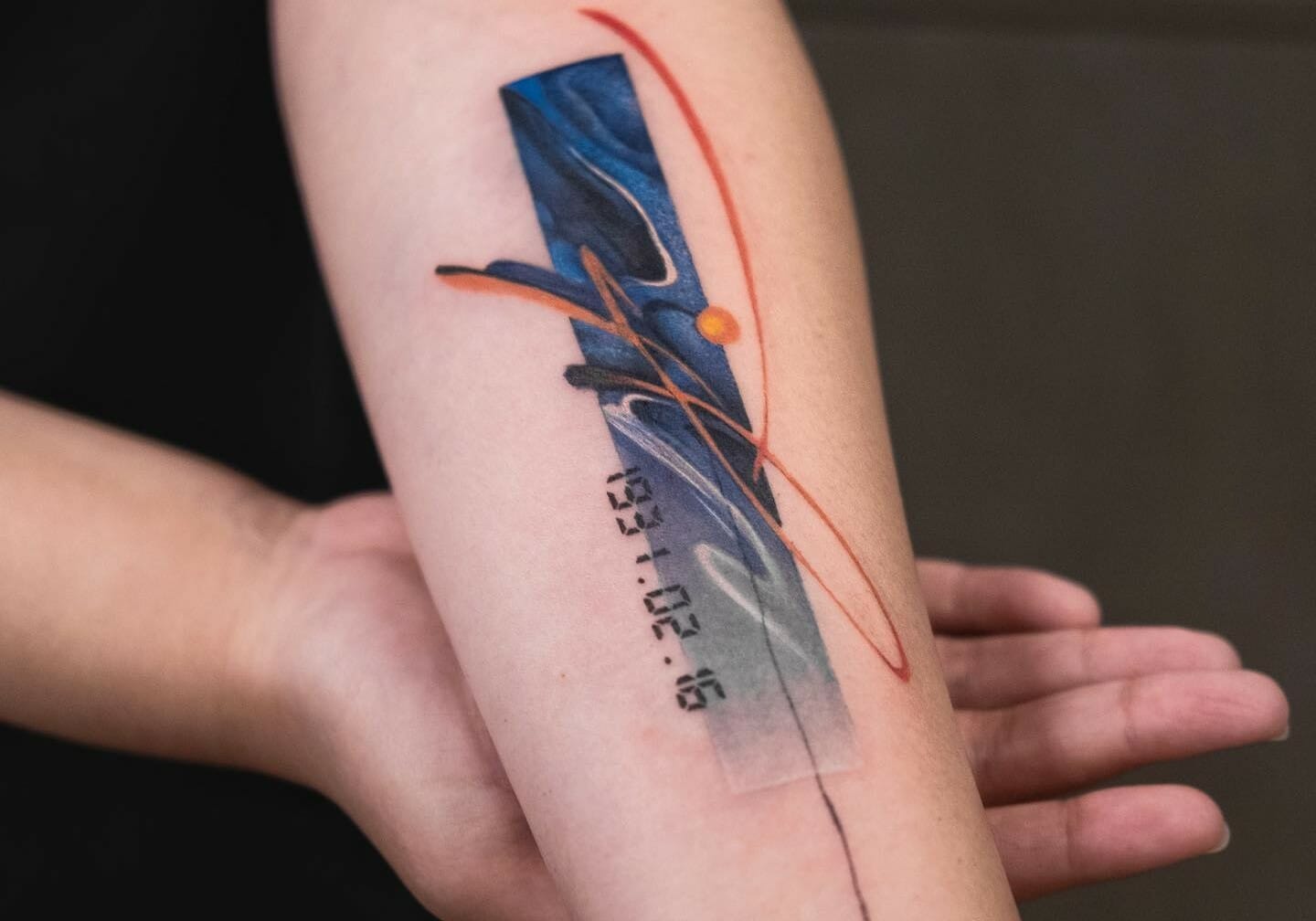
Okay, buckle up, tattoo enthusiasts! We’re diving deep into the fascinating world of micro tattoos – those tiny, intricate works of art that are taking the body art scene by storm. Get ready to explore the allure of these miniature masterpieces, understand why they’re trending, and maybe even get inspired to add one (or a few!) to your own collection.
What Are Micro Tattoos: A World of Ink, Condensed
Forget sprawling sleeves and back pieces (though we love those too!). Micro tattoos are all about subtlety and precision. We’re talking about tattoos that are typically smaller than two inches in size, often focusing on minimalist designs and fine lines. Think delicate floral patterns, geometric shapes, tiny animals, single words, or even abstract symbols – all rendered with incredible detail in a compact space.
The Magic Lies in the Details: Precision and Skill
The beauty of a micro tattoo isn’t just in its size; it’s in the artistry required to execute it flawlessly. These tattoos demand a high level of skill from the artist. They need to be masters of fine-line work, shading, and color blending (if color is involved). Because the canvas is so small, every line and dot counts! A shaky hand or a poorly chosen design can easily lead to a blurred or distorted result.
Why the Micro Tattoo Craze? Unpacking the Trend
So, what’s driving the popularity of these miniature marvels? Let’s explore the reasons why micro tattoos are having such a moment:
1. Subtlety and Discretion: A Whisper of Ink
One of the biggest draws of micro tattoos is their discreet nature. They’re perfect for those who want to express themselves through body art but prefer a more subtle approach. A tiny heart on your wrist, a small star behind your ear, or a minimalist symbol on your ankle – these are all ways to add a personal touch without making a bold statement.
2. The "Starter Tattoo" Appeal: Dipping Your Toes In
For those new to the world of tattoos, a micro tattoo can be a great way to test the waters. It’s a low-commitment option that allows you to experience the process without the pressure of a large, permanent piece. If you’ve always been curious about getting inked, a micro tattoo can be the perfect gateway.
3. Pain Factor: Less Ink, Less Ouch!
Let’s be honest, the pain factor is a consideration for many when getting a tattoo. Because micro tattoos are smaller and require less time to complete, they generally involve less discomfort than larger tattoos. While pain tolerance varies from person to person, the shorter duration and smaller area being tattooed can make the experience more manageable.
4. Versatility in Placement: Where Can You Put Them?
The small size of micro tattoos opens up a world of possibilities when it comes to placement. They can be placed virtually anywhere on the body, including areas that are typically more challenging for larger tattoos, such as fingers, ears, and even the face (though facial tattoos should always be carefully considered).
5. Affordability: Small Size, Smaller Price Tag (Usually!)
Generally, micro tattoos are more affordable than larger tattoos. This is because they require less time, ink, and artist expertise. However, it’s important to note that the price can still vary depending on the artist’s skill, the complexity of the design, and the location of the studio.
6. The Minimalist Aesthetic: Clean Lines, Big Impact
Micro tattoos perfectly align with the minimalist aesthetic that’s so popular right now. They offer a clean, understated way to express yourself, adding a touch of personality without overwhelming your overall look.
7. Easy to Conceal: Work-Friendly Ink
In many professional settings, visible tattoos can still be a concern. Micro tattoos are often easier to conceal than larger tattoos, making them a more work-friendly option for those who need to maintain a certain image.
Choosing the Right Design: What Speaks to You?
Now, let’s talk about design. The possibilities are endless, but here are a few popular ideas to get your creative juices flowing:
- Nature-Inspired Motifs: Tiny flowers, leaves, birds, or animals.
- Geometric Shapes: Simple lines, triangles, circles, or more complex patterns.
- Words and Initials: Meaningful words, initials of loved ones, or inspirational quotes.
- Symbols: Astrological signs, religious symbols, or personal emblems.
- Abstract Designs: Unique patterns and shapes that express your individuality.
Finding the Right Artist: Skill and Experience Matter
When it comes to micro tattoos, choosing the right artist is crucial. Look for an artist who specializes in fine-line work and has a portfolio that showcases their skill in creating small, detailed designs. Read reviews, ask for recommendations, and don’t be afraid to ask questions about their experience.
Aftercare: Protecting Your Tiny Treasure
Proper aftercare is essential for ensuring that your micro tattoo heals properly and looks its best. Follow your artist’s instructions carefully, which typically involve:
- Keeping the area clean and dry.
- Applying a thin layer of aftercare ointment.
- Avoiding direct sunlight and excessive sweating.
- Resisting the urge to pick or scratch the tattoo.
Potential Challenges: Considerations Before You Ink
While micro tattoos are generally safe, there are a few potential challenges to be aware of:
- Fading: Due to their small size and fine lines, micro tattoos may be more prone to fading over time. Regular touch-ups may be necessary to maintain their clarity.
- Blurring: If not executed properly, micro tattoos can blur or spread over time, especially in areas with thinner skin.
- Visibility: As mentioned earlier, the small size of micro tattoos can make them difficult to see from a distance.
The Longevity Factor: How Long Do They Last?
The longevity of a micro tattoo depends on several factors, including the quality of the ink, the skill of the artist, the placement of the tattoo, and your aftercare routine. With proper care, a well-executed micro tattoo can last for many years, but regular touch-ups may be needed to keep it looking its best.
Micro Tattoos: More Than Just Ink, It’s a Statement
Micro tattoos are more than just a fleeting trend; they’re a reflection of our desire for self-expression in a subtle and sophisticated way. They’re a testament to the power of minimalism and the beauty of precision. Whether you’re a seasoned tattoo enthusiast or a first-timer, a micro tattoo can be a meaningful and stylish addition to your personal story.
Conclusion: Embrace the Tiny Trend
From their discreet charm to their versatility in placement, micro tattoos have carved a unique niche in the world of body art. They offer a perfect blend of subtlety, style, and self-expression, making them a popular choice for those seeking a meaningful yet understated way to adorn their bodies. So, if you’re looking to add a touch of ink to your life, consider the captivating world of micro tattoos – you might just find the perfect tiny treasure to tell your story.
FAQs: Your Micro Tattoo Questions Answered
1. How much do micro tattoos typically cost?
The cost varies depending on the artist’s skill, the complexity of the design, and the location of the studio. However, you can generally expect to pay anywhere from $50 to $200 for a simple micro tattoo.
2. Do micro tattoos hurt more than larger tattoos?
Pain tolerance varies from person to person, but most people find micro tattoos to be less painful than larger tattoos due to the shorter duration and smaller area being tattooed.
3. How long does it take for a micro tattoo to heal?
Micro tattoos typically take about 2-4 weeks to heal completely.
4. Can micro tattoos be removed easily?
Yes, micro tattoos can be removed with laser tattoo removal, but the process may require multiple sessions and can be more challenging than removing larger tattoos.
5. Are there any specific areas where micro tattoos are not recommended?
While micro tattoos can be placed virtually anywhere, areas with very thin skin or high friction (such as the palms of the hands or the soles of the feet) may not be ideal, as the tattoo may fade or blur more quickly. Always consult with your artist to determine the best placement for your design.




















